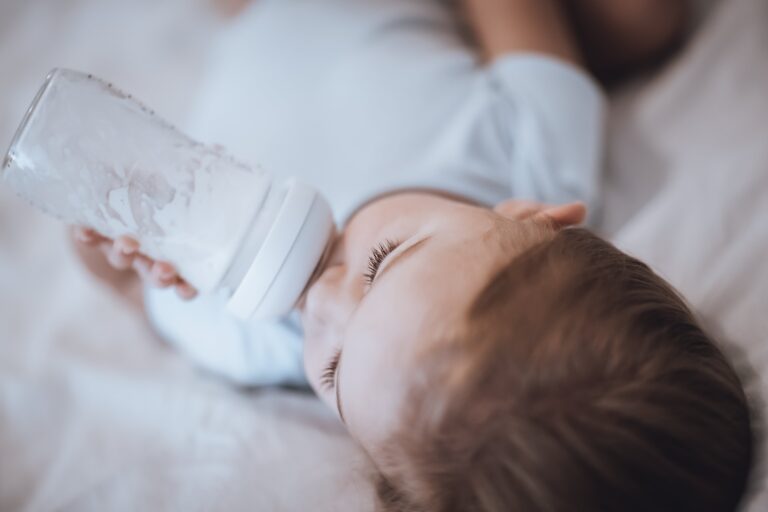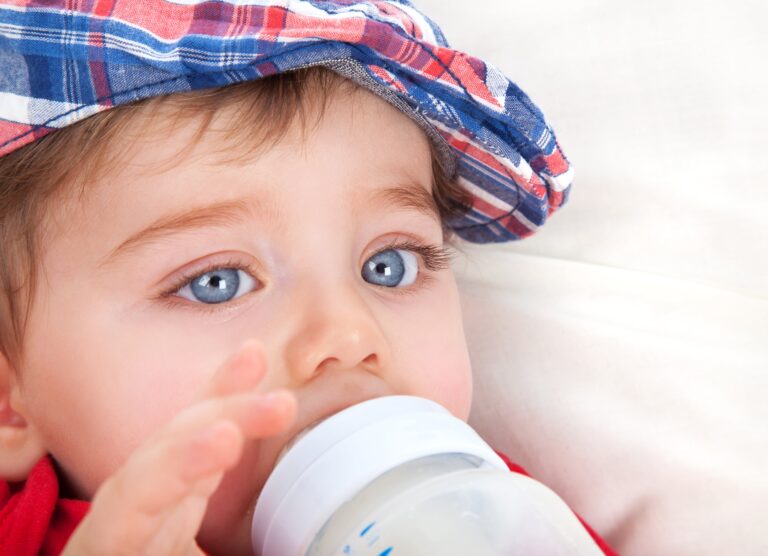Why Can’t Babies Wear Sunscreen: Vital Safety Tips
Babies under six months should not wear sunscreen due to their delicate skin. Their skin is more likely to react negatively to the chemicals in sunscreens.
Protecting babies from the sun’s harmful rays is crucial, but using sunscreen isn’t the way to do it for infants under six months old. Their sensitive skin is thinner and more permeable than that of older children and adults, making them more susceptible to irritation and allergic reactions from the ingredients in sunscreen.
That’s why pediatricians and health organizations recommend alternative forms of sun protection for infants. Keeping babies in the shade, dressing them in lightweight, long-sleeved clothing, and using wide-brimmed hats are the best ways to safeguard their delicate skin from UV radiation. As parents prepare for outdoor activities, remembering these sun safety tips ensures their little ones stay protected while enjoying the warm weather. After six months, applying a minimal amount of mineral-based sunscreen with ingredients like zinc oxide or titanium dioxide to exposed areas can be considered with caution and a doctor’s advice.
Sensitive Baby Skin Vs. Sunscreen Ingredients
Babies have very sensitive skin that can easily absorb chemicals. Sunscreen ingredients might hurt their gentle skin and health. Babies could get irritations or rashes from sunscreen.
Experts say babies under six months should stay away from sunscreen. Their bodies may not be ready to handle it. Instead, dress them in protective clothes and find shade.
Physical Barriers: Nature’s Sunblock
Babies need special protection from the sun’s harsh rays. Direct sunlight can harm their delicate skin. Thus, parents must choose safe sun protection methods for their little ones.
Clothing acts as a physical barrier against UV rays. Outfits with long sleeves and pants in lightweight fabrics are ideal. Hats and sunglasses give extra safety for eyes and face.
Using strollers with canopies adds another layer of defense. It keeps babies cool and shaded. Choosing a spot in the shade is crucial during outdoor time.
Sunscreen Alternatives For Infants
Babies’ skin is very sensitive and can easily get hurt by the sun. Instead of sunscreen, dress them in sun-protective fabrics. These clothes block harmful rays and cover skin well.
Choose hats with a wide brim to shield the face and neck. Also, use baby sunglasses with UV protection to keep little eyes safe. Ensure these fit snugly and don’t fall off easily.
When To Introduce Sunscreen To Babies
Doctors suggest babies under six months should avoid sunscreen. Their skin is extra sensitive.
Full sun protection comes from shade and clothing. Sunscreen can be used after six months. Always pick sunscreens suitable for babies.
For children aged six to twelve months, apply small amounts of baby-formulated sunscreen. All-natural components are key.
Always test sunscreen on small skin areas first. For any sign of irritation, see a doctor.
| Age | Guideline |
|---|---|
| 0-6 months | No sunscreen. Use clothing and shade instead. |
| 6+ months | Start with a small amount of baby sunscreen. |
Selecting Baby-friendly Sunscreens
Choose mineral sunscreens for your baby’s delicate skin. Zinc oxide and titanium dioxide are safe ingredients found in these sunscreens. They sit on top of the skin, creating a barrier against the sun’s rays. Unlike chemical sunscreens, they don’t absorb into the skin, which makes them gentler for infants.
These minerals work by reflecting UV light. They are less likely to cause irritation. This makes mineral sunscreens better suited for babies over six months. Always check that the product is formulated for infants. Doing so ensures the best protection for your baby’s soft skin.
Application Tips For Baby Sunscreen
Put sunscreen on your baby’s skin where clothing doesn’t cover. Use only small amounts on exposed areas. Test the sunscreen on a small patch of skin first. Do this every time you use a new tube.
Apply sunscreen at least 15 minutes before going outside. This is to make sure it absorbs well. Reapply every 2 hours, or after swimming or sweating.
| Steps | Action |
|---|---|
| 1. Test | Test on small skin area. |
| 2. Apply Early | Apply 15 minutes before sun. |
| 3. Reapply | Every 2 hours or after water. |
Emergency Measures For Accidental Exposure
Immediate first aid for sunscreen exposure to eyes involves flushing the eyes with cool, fresh water. Be gentle and pour the water slowly. Try to keep their eyes open during the process. Do this for at least 15 minutes. Seek medical help if irritation persists.
If baby’s skin shows a reaction, like redness or bumps, rinse the area with cool water. Gently pat dry and avoid rubbing. Apply a soothing moisturizer or aloe vera. Cover the area with loose clothing to protect it. Contact a doctor if the condition doesn’t improve or worsens.
Frequently Asked Questions Of Why Can’t Babies Wear Sunscreen
Why Can’t You Use Sunscreen On Babies Under 6 Months?
Babies under 6 months have sensitive skin that may react to sunscreen’s chemicals, potentially causing irritation or rash. Use protective clothing and shade instead.
Can I Put Sunscreen On 3 Month Old?
It’s recommended to avoid using sunscreen on infants under 6 months old. Instead, use clothing and shade for protection.
What If I Accidentally Put Sunscreen On My Baby?
Gently cleanse your baby’s skin to remove the sunscreen and watch for any signs of irritation. Consult your pediatrician if any reaction develops.
Conclusion
Protecting our little ones from the sun is a top priority. It’s clear that babies’ sensitive skin needs special care. The risks of sunscreen use in infants under six months old outweigh the benefits. Instead, opt for protective clothing and shade.
As they grow, introduce sunscreens made for sensitive skin. Keep your baby safe and enjoy the sunshine responsibly.






